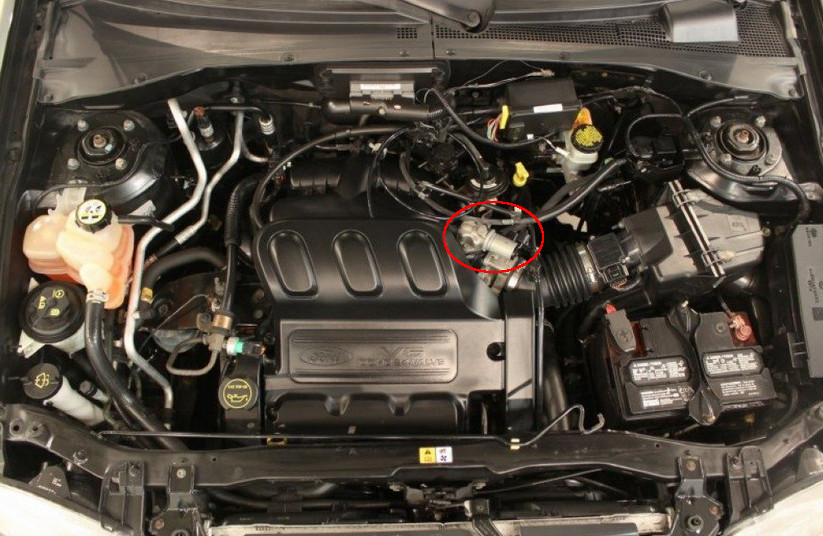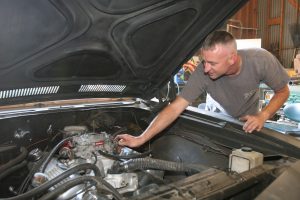The smooth operation of your vehicle relies on the seamless coordination of various components, and one key player in this symphony is the Idle Speed Control Valve (ISCV). When this vital component encounters issues, it can disrupt your car’s idle speed, affecting overall performance. In this guide, we’ll explore common problems associated with the ISCV and provide expert troubleshooting tips to ensure your car runs at its best.
Understanding the Idle Speed Control Valve
Before delving into troubleshooting, let’s grasp the role of the Idle Speed Control Valve in your car’s engine system. The ISCV regulates the engine’s idle speed by controlling the amount of air entering the engine during idling. When functioning correctly, it maintains a consistent and smooth idle speed. However, issues can arise, leading to irregular idling or stalling.
The ISCV is an actuator that opens and closes to adjust airflow during idling when the throttle body is closed. It contains a spring-loaded valve and an intake passage controlled by the engine computer. This allows extra air to bypass the closed throttle body and balanced idle speed. The added air compensates for extra engine load like air conditioning, power steering, or electronics. Faulty operation upsets this crucial adjustment capability leading to problematic fluctuation.
Symptoms of ISCV Issues
Identifying potential issues with the ISCV is crucial for prompt intervention. Common symptoms include irregular idle speed, stalling when idling, or fluctuating RPMs. You might also experience difficulties starting your car or notice poor engine performance. If you observe any of these signs, it’s time to troubleshoot your ISCV.
Listen for changes in the engine sound while idling. Roughness or vibrating sensations signal imbalance. Use a diagnostic scanner to monitor RPMs for patterns of inconsistency. Stalling issues mainly arise from idle speeds dipping too low. Difficult starts may stem from the ISCV failing to open and allow enough air intake to bootstrap combustion. If RPMs spike erratically, that indicates the ISCV is stuck open. Any deviation from smooth idling marks grounds for investigation.
Expert Troubleshooting Tips
- Inspect for Vacuum Leaks: Begin by checking for vacuum leaks in the hoses connected to the ISCV. Cracks or loose connections can disrupt the airflow, affecting the valve’s performance. A visual inspection and a hands-on check for secure connections can often reveal the culprit.
Use soapy water to coat hoses, then run the engine to check for bubble formations indicating leaks. Inspect all related vacuum system hoses for deterioration. Replace any cracked, stiff or swollen tubes. Verify secure seating of hoses onto ports without gaps that allow air infiltration. Even minor leaks disturb vacuum integrity to destabilize idling via the ISCV.
- Clean the ISCV: Over time, carbon deposits can accumulate on the ISCV, hindering its movement and performance. Cleaning the valve with a recommended throttle body cleaner can often resolve issues related to stuck or sluggish movement.
Follow manufacturer guidelines for properly removing and accessing the valve for cleaning. Gently brush loose deposits from the valve then spray cleaner until fully dissolved. Allow to dry completely then reinstall. Choose a cleaner compatible with delicate sensor materials that restores full mechanical motion without leaving residue behind. Cleaning can quickly restore function in soiled valves.
- Check for Faulty Wiring: Examine the wiring connected to the ISCV for any signs of damage or wear. Faulty wiring can impede the valve’s communication with the engine control module, leading to irregular idle speed. If needed, repair or replace damaged wiring.
Inspect wiring sheathing for cracks permitting spark hazards or corrosion. Replace deteriorated protective looms. Check terminals and loom joints for secure fit without loosening or oxidation. Reset connections firmly and apply dielectric grease. A common failure point is the plug detached from movement – ensure a tight click when reconnecting. Test resistance values between pins to identify degradation.
- Test the Throttle Position Sensor (TPS): The TPS works in conjunction with the ISCV to ensure smooth engine operation. Use a multimeter to check the TPS for proper voltage and resistance. A malfunctioning TPS can contribute to idle issues, and replacing it may resolve the problem.
Unplug the TPS then reference repair guides matching your vehicle for designated pinouts and target resistance ranges by model. Compare measurements to specified values at both closed and wide open throttle positions. Values outside expectations indicate TPS replacement is required. On reinstallation take care to avoid overtightening. Resetting the computer afterward completes the optimization.
- Verify Coolant Levels: Adequate coolant levels are crucial for maintaining the optimal temperature of the engine. Low coolant levels can lead to overheating, impacting the ISCV’s performance. Ensure your car’s coolant levels are within the recommended range.
The ISCV behaves abnormally if operating above specified temperature thresholds. Overheating throws off the computer’s compensation efforts to stabilize RPMs. Top up coolant reservoirs using manufacturer approved mixtures. Pressure test the system to check for leaks if topping up is excessively frequent. Replace aged coolant to restore ideal heat dissipation and temperature regulation.
In conclusion, employing strategic diagnostic techniques for your vehicle’s Idle Speed Control Valve facilitates quicker resolution of suboptimal drivability. Combining methods of inspection, cleaning, component testing, and software resets empowers savvy troubleshooters to overcome disruptive idle speed irregularities. With source causes addressed comprehensively, rather than merely the symptoms, your vehicle engine eagerly awaits the next open throttle to demonstrate peak power and efficiency for miles ahead.




